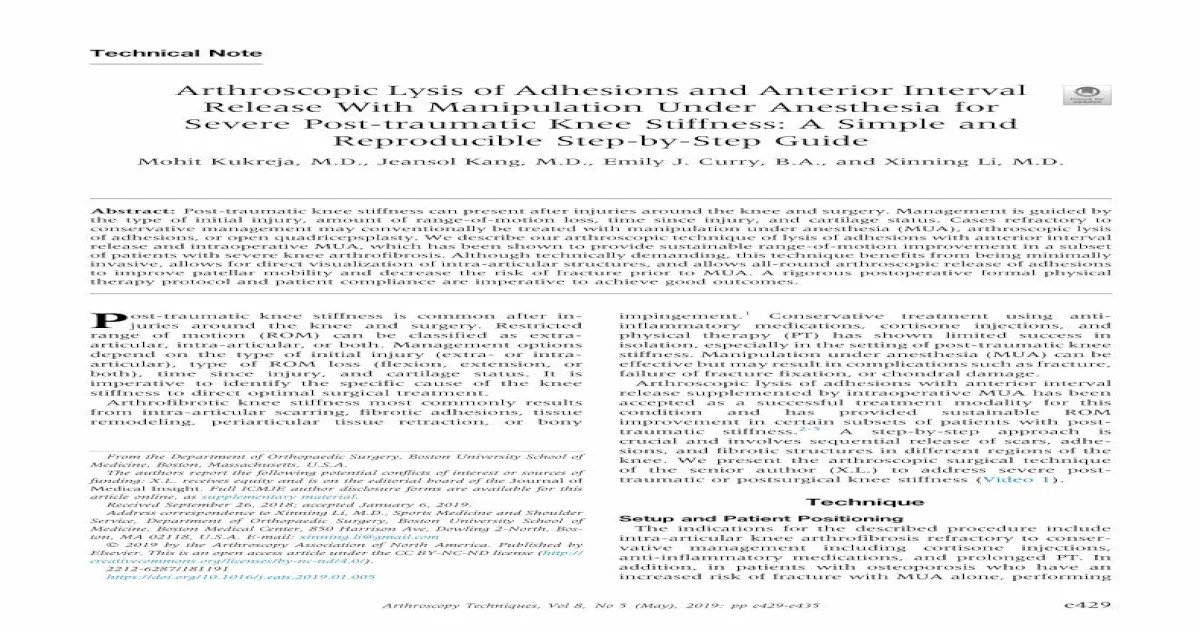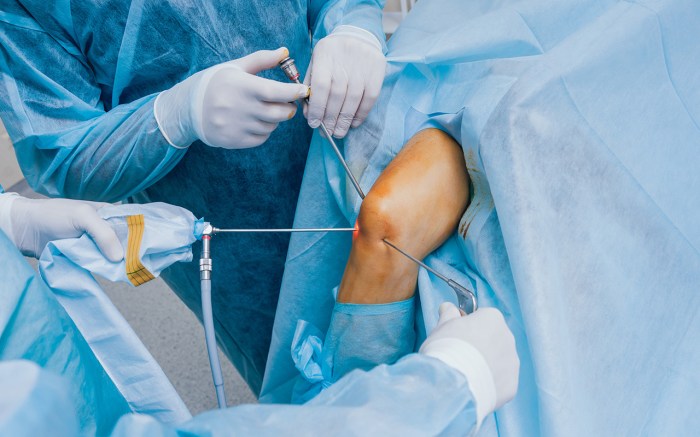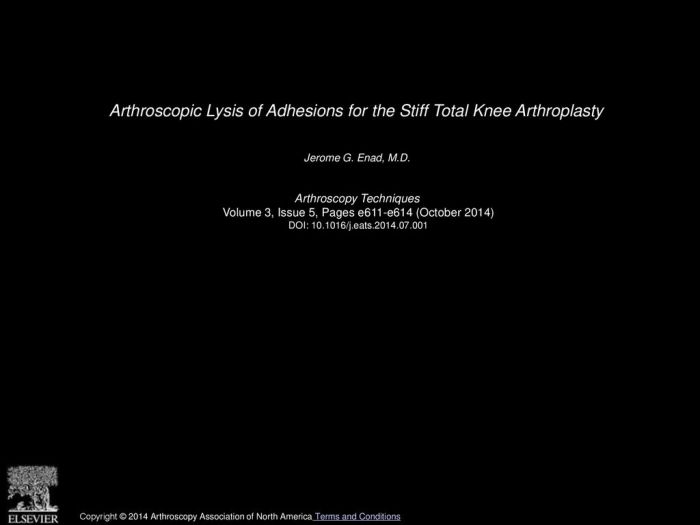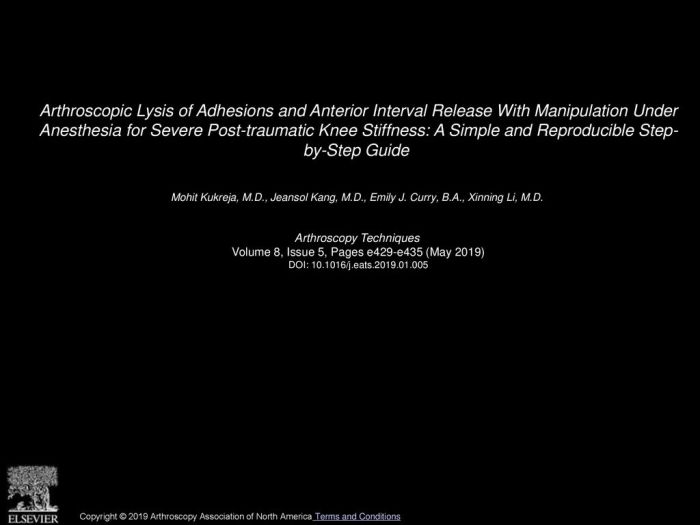Arthroscopic lysis of adhesions shoulder is a minimally invasive surgical procedure that effectively treats shoulder stiffness and pain caused by adhesions. Adhesions are bands of scar tissue that form within the shoulder joint, restricting movement and causing discomfort. This procedure involves using an arthroscope, a small camera inserted into the shoulder joint, to visualize and release the adhesions, restoring range of motion and alleviating pain.
This guide provides an in-depth exploration of arthroscopic lysis of adhesions shoulder, covering indications, preoperative evaluation, surgical technique, postoperative management, outcomes, and alternative treatment options. By understanding the procedure and its implications, patients can make informed decisions regarding their shoulder health.
Introduction

Arthroscopic lysis of adhesions (ALA) is a surgical procedure used to treat shoulder adhesions, which are bands of scar tissue that form between the shoulder joint surfaces and surrounding tissues, restricting movement and causing pain. ALA involves using an arthroscope, a small camera inserted into the joint, to visualize and release these adhesions.
Indications for ALA: Arthroscopic Lysis Of Adhesions Shoulder

ALA is indicated for a variety of shoulder conditions that cause adhesions, including:
- Frozen shoulder (adhesive capsulitis)
- Rotator cuff tears
- Glenohumeral instability
- Post-traumatic adhesions
Preoperative Evaluation and Planning
Preoperative evaluation involves a thorough physical examination and imaging studies, such as X-rays or MRI, to assess the extent of adhesions and rule out other underlying conditions. Patient selection is crucial to optimize outcomes, and factors such as age, activity level, and duration of symptoms are considered.
Surgical Technique
ALA is performed under general anesthesia. The arthroscope is inserted through a small incision, allowing the surgeon to visualize the joint and identify the adhesions. Specialized instruments are used to carefully release the adhesions, restoring joint mobility. Additional procedures, such as debridement or repair of torn tissues, may be performed as needed.
Postoperative Management
After ALA, patients typically follow a structured rehabilitation program that includes pain management, gentle range of motion exercises, and gradual strengthening. Activity restrictions are imposed to prevent excessive strain on the healing joint. Potential complications include infection, bleeding, and nerve damage, which are managed appropriately.
Outcomes and Evidence
ALA has been shown to be an effective treatment for shoulder adhesions, resulting in significant improvements in pain, range of motion, and function. Studies have demonstrated high patient satisfaction and long-term durability of results.
Alternatives to ALA, Arthroscopic lysis of adhesions shoulder
Alternative treatment options for shoulder adhesions include conservative management with physical therapy, injections, or open surgery. Conservative management is often the first line of treatment, while ALA or open surgery may be considered if conservative measures fail to provide adequate relief.
General Inquiries
What are the benefits of arthroscopic lysis of adhesions shoulder?
Arthroscopic lysis of adhesions shoulder offers several benefits, including reduced pain, improved range of motion, enhanced shoulder function, and faster recovery time compared to open surgery.
What are the risks associated with arthroscopic lysis of adhesions shoulder?
The risks associated with arthroscopic lysis of adhesions shoulder are generally low, but may include infection, bleeding, nerve damage, and stiffness. However, these risks are minimized when the procedure is performed by an experienced surgeon.
How long does it take to recover from arthroscopic lysis of adhesions shoulder?
Recovery time varies depending on the individual, but most patients experience significant improvement within a few weeks. A rehabilitation program is typically recommended to strengthen the shoulder and restore range of motion.

